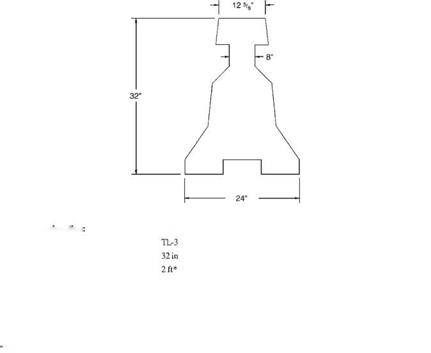Placement Considerations
Bridges should provide a full, continuous shoulder that maintains uniform clearance with approaching roadside elements. However, if the bridge is narrower than the
 AASHTO Designation
AASHTO Designation
![]() Test Level:
Test Level:
Nominal Barrier Height: Maximum Dynamic Deflection:
Remarks: This proprietary portable barrier system is suitable for both permanent (unbalanced traffic flow) and temporary applications. It is composed of a chain of safety-shape concrete barrier segments 37 in long which can be shifted laterally. Even though the cost is relatively high, the system becomes cost-effective when frequent lateral movement of the temporary barrier is required while maintaining traffic.
‘Deflections may be reduced by using CRTS or SRTS.
FIGURE 6.35 Movable concrete median barrier. Conversion: 1 in = 25.4 mm. (From Roadside Design
Guide, AASHTO, Washington, D. C., 2002 and 2006, with permission)
approaching roadway and shoulder, the appropriate flare rate should be provided where the railing is within the shy distance (Art. 6.7.3). Curbs higher than 8 in (200 mm ) in front of bridge railings should be avoided. If a sidewalk is present, use a bridge railing between the traffic and the sidewalk to protect pedestrians, and a pedestrian railing along the outside of the bridge. End treatment of the bridge railing is difficult under these circumstances. If a crash cushion or other barrier cannot be used, a vertically tapered end section may be the best solution. The location and extent of the taper must be carefully considered for the conditions present.






Leave a reply